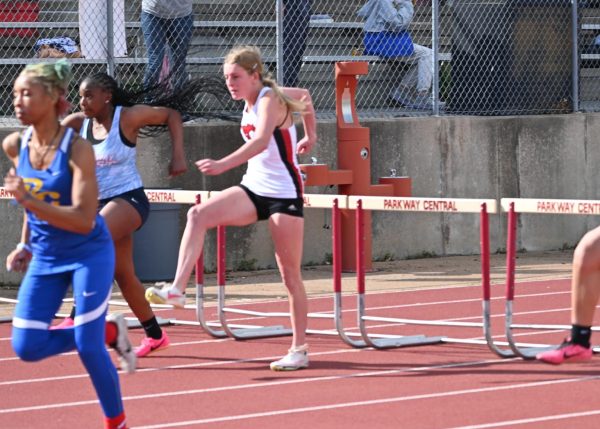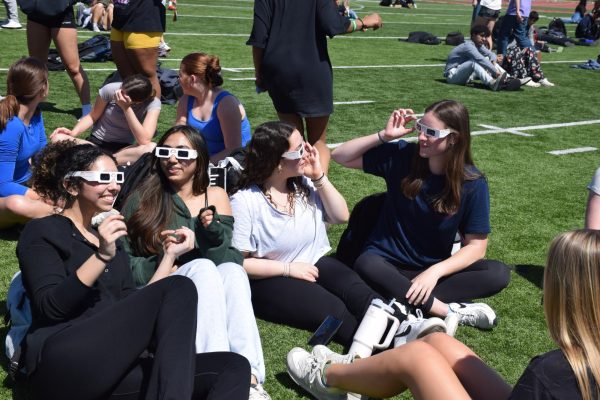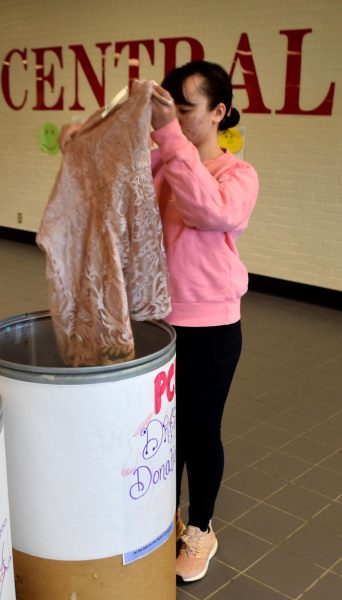Summer proves dangerous for teen drivers
May 10, 2018
You are driving along a road at night with two of your friends in the car. It isn’t too late, and the weather is warm. You all don’t have to worry about school the next day because it’s summer, so instead you sing along to the radio and live in the moment. Suddenly, that moment is changed in a way none of you could have expected.
In a flash, you slip off the road. You are a new driver, just 16 years old, and begin to panic. You force the steering wheel back around, jerking the car back onto the road. However, it flips over, only finally coming to a stop in the other lane. You frantically look around even though you yourself are bleeding. You and one of your friends were wearing a seatbelt, but the other wasn’t. You had no idea why she wasn’t wearing a seatbelt, but you hadn’t thought to check. You and your friend who were wearing seatbelts are panicking, trying to figure out what to do. You are both hurt, but one of you calls the police. Lights and sirens overwhelm your senses, but you’re able to pick out one thing: Time of Death, 17:42. Your friend who wasn’t wearing a seatbelt was dead.
From Memorial Day to Labor Day, all summer long, is known as the “100 Deadliest Days of Driving”. The number of fatal car crashes rises during this period for every age demographic, but spikes by 15% for teen drivers.
“Teen drivers are the most at risk, all of the statistics show that that is true, not only during summer but any time on the road,” Vice President of Public Affairs for AAA, Mike Right, said. “But there is a reason for the ‘100 Deadliest Days,’ and that is that you drive differently in July than you do in February.”
In 2015, the number of fatal crashes for 16-19 year olds was a large 2,893, according to the AAA Foundation for Public Safety. The biggest factor in the crashes were not only cell phones, but distractions as a whole. To combat this, Officer Mark Caswell gave many words of advice for teenagers as summer begins.
“Distractions are the number one cause of crashes,” Caswell said. “Noise, and phone distractions, and music. You’re opportunity to not pay attention is increased and not everybody wears seatbelts everywhere.”
Another distraction is passengers, where the number of passengers increases not only your chance of getting in a crash, but also increases your speed and distractions.
“Limit your passengers,” Caswell said. “Especially with new drivers, your reaction to critical incidents is delayed. The less distractions the better, and buckle up. Make sure everyone is wearing a seatbelt, and don’t speed.”
Wearing a seatbelt is one of the single most important things that drivers can do to limit their chances of serious injury in the event of a crash. Not only is not wearing a seatbelt illegal, but it could be the one thing standing between life and death.
“It is your responsibility as the driver, to make sure that everyone is buckled up,” Caswell said. “When just one of your friends doesn’t have a seatbelt on, that one person is now a projectile inside your car during a crash. If you have a 165 pound friend who is plummeting around, he is causing a lot of pain and suffering not just for him but for everyone else.”
Besides seatbelts, another thing that drivers can do to prevent crashes is reducing speed.
“Pay attention to speed limits,” Right said. “For each increase in speed, that decreases your ability to react.”
Teens tend to increase their speed for each passenger that they add into the car, which also increases distractions.
“Unfortunately sometimes we let the good times overtake our smart thinking, but we need to step back just a half step to affect our lives down the road,” Caswell said. “You can still have a good time without speeding, without a car load of kids, and with seatbelts. Ideas that keep you safe and sound, going to the beach and coming back to school.”
In addition to reducing speed, another thing that teens need to watch out for is other drivers.
“For each mile per hour that you add, you are limiting your ability to react to somebody else driving badly,” Caswell said. “No matter what you do, there is always someone out there not doing the right thing.”
Limiting distractions and using proper safety tools are a large part of surviving through the summer. However, one cause cannot be taken away with the click of a seatbelt. The main underlying cause of fatal crashes is experience and maturity.
In the case of Lance A. (16) and Dawson Danback (18) of southeastern Missouri, A. was driving when he drove off the road. The vehicle struck a tree and flipped over. Despite both boys wearing seatbelts, Danback was pronounced dead at the scene and A. was taken by helicopter to a hospital with serious injuries. It was the 33rd fatality for Missouri Highway Patrol Troop E in 2017, and had occurred during the Deadliest Days.
16-year-old Angelique T. was driving in southern Missouri when she ran the car off the road. She jerked it back onto the road, but one of the two passengers that she also had in the car was ejected. She had not been wearing a seatbelt. Thurman and her 15-year-old friend had survived, and had both been wearing their seatbelts, but the 16-year-old who had been thrown from the car had died. On July 22, she had become the 35th fatality for Troop E in 2017 alone.
Getting into a crash can be dramatic and life-altering. You or others could be injured, in shock, or unconscious. Although it may be chaotic and scary, it is important to prioritize and know what to do.
If you are involved in a crash, “your first obligation is to care for the injured, and see that there are no additional crashes,” Right said. “Get off the road and contact the appropriate authorities using 911 or 511. Stop in a safe place, exchange information, take care of the injured, and avoid further collisions and moving traffic.”
Although the other drivers and passengers may try to convince you to not to call the police, experts stress that you should always call the police. If you are a witness to an crash, what you should do depends on the type of crash and the severity of what happened. If a crime occurred, or someone did something that they were not supposed to do, call the police and remain give your information, for you may need to give a testimony over what you saw happen. If someone appears to be injured, your first responsibility is to make sure that you are not putting yourself at risk. Let the authorities know.
“If you are not going to be of assistance, there is no reason to get out of your car,” Right said.
Although the Good Samaritan Law protects the ordinary people that go out of their way to help others, it is important to let the authorities do their job and stay out of their way.
Overall, “Be smart,” Caswell said. “Just enjoy the summer with a little bit of caution when you drive.”
*Names have been changed to protect minor identity









